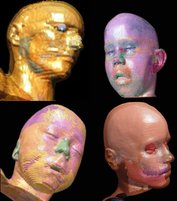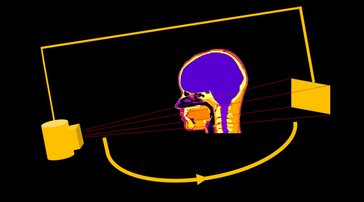RADIATION DOSE SIMULATION
Patient-specific approach of CBCT imaging: custom made Monte Carlo simulations
To quantify the amount of radiation dose and determine the actual risk from X-ray exposures the effective dose has to be determined. Monte Carlo (MC) simulation using voxel-based anthropomorphic phantoms is a flexible and accurate alternative method to the direct measurement of organ and effective doses in phantoms. Although MC is frequently used in CBCT for radiotherapy, there is little evidence in literature on the use of MC in dental CBCT.
This project builds on the work performed in the ‘Monte Carlo’ part of the OT project entitled ‘Development of a cone beam CT-based surgical planning technique with standardized and accurate jaw bone quantification at a low radiation dose’ (OT/08/057) and on the dosimetric work performed in the multicenter project ‘SEDENTEXCT: Safety and Efficacy of a New and Emerging Dental X-ray Modality’, funded by the European Atomic Energy Community’s Seventh Framework programme FP7/2007-2011. The OT/08/057 project resulted in the development of an accurate, efficient and flexible simulation tool for quality assurance, system evaluation and optimization of CBCT equipment which was adopted to model the system structure and the image acquisition geometry and applied to calculate radiation doses, to assess the dose distribution and to investigate the dose influential factors.
The overall project aim can be divided into the following sub-objectives:
- Objective 1: To customize an existing Monte Carlo framework towards patient-specific applications.
- Objective 2: To validate the Monte Carlo framework and the patient-specific voxel phantoms.
- Objective 3: To calculate organ doses for various age groups.
- Objective 4: To estimate the actual radiation induced risk from these doses using recent dose risk modeling approaches.
PROJECT
Radiation dose simulation
DURATION
4 years
START
02/01/2014
CONTACT
ruben.pauwels@kuleuven.be


